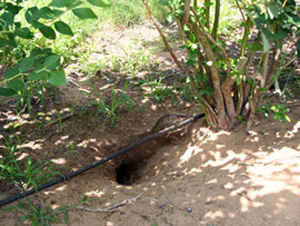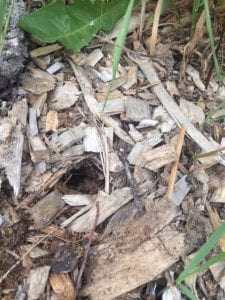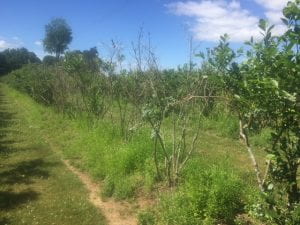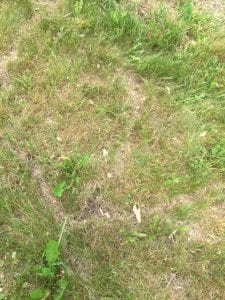Rodent damage may occur during winter as rodents feed on the bark of blueberry plants (especially those that are heavily mulched), either girdling them completely or partially girdling them. Rabbits, mice, and voles will girdle the base of canes when food becomes scarce.


When growth begins in spring, girdled canes will suddenly die from lack of water.
Woodchucks
Woodchucks can be a problem in blueberry plantings. Burrow excavation may damage root systems. Burrows also pose a walking hazard to workers and customers.

Rabbits
Rabbits eat cane tips at or above the snow line. They may also strip bark from canes above the snow line.


Voles
Feeding by Voles (small, mouse-like rodents) will cause a general decline in blueberry plant health. Meadow (Microtus pennsylvannicus) and Pine (Microtus pinetorum) Voles are the most common voles found in NY State. Vole damage commonly occurs from late fall to early spring when other food sources are limited. Surface tunnels in mulch or grass row middles with a 1 inch diameter entrance hole are an indication of vole activity. Dig up plants and examine the roots for feeding damage. More rodent damage information.




More information:
- IPM Factsheet – Meadow Vole and Pine Vole
- Cornell Wildlife Damage Management Factsheet – Voles
- Cornell Wildlife Damage Management Factsheet – Moles
- Pennsylvania Game Commission – Wildlife Notes – Mice and Voles
Use these resources if you need additional help with diagnosis and to find solutions to your problem.


